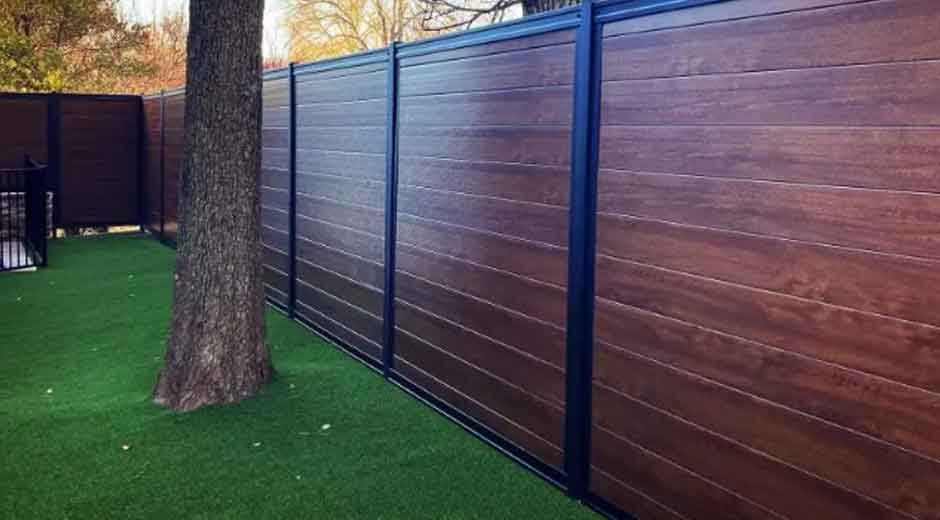Vinyl fencing can come in various designs to complement your space, and may include features such as privacy panels, pickets, and post-and-rail designs. Privacy panels enclose backyards or pool areas. Here are a few other ways to customize your vinyl fence for unique spaces:
Table of Contents
Adjust Heights and Coordinate Colors
Properties have varying dimensions and terrains that may benefit from a vinyl fence designed for that space. Installing slightly varied fence heights can help provide privacy while maintaining visibility. In sloped sections, fencing installation specialists can use racking or stepping techniques to preserve even top lines. Mapping the layout enables fewer gaps or misalignments. Before installation, professionals measure each fence section along the ground contour to verify accurate alignment. For properties that blend traditional and contemporary styles, lattice-top designs can introduce refined decorative detail. The overall architecture of the property should guide the selection of the vinyl fence design.
Vinyl fences come in shades beyond classic white that coordinate with the existing structures. Vinyl fencing is available in a range of colors, including black, gray, and brown, which can be selected to coordinate with house exteriors, outdoor furniture, or landscaping features. Neutral shades often align with modern architectural styles, while softer tones may suit more rustic settings. Some installation companies provide color samples or digital previews to assist with planning. For general coordination, neutral colors tend to blend with surrounding scenery, and deeper tones can draw attention to specific features. Selecting a fence color that reflects the property’s existing palette helps create a cohesive appearance.
Integrate Accessories and Blend Fence Types
Incorporating gates, post caps, inserts, or other accessories adds decorative elements and accessibility functions. Gates create walkthroughs or vehicular entry points. Available in flat, pyramid, and solar-lighted versions, post caps can serve both decorative and lighting functions. Accents such as iron inserts or strip latticework will add visual interest to solid fence sections while maintaining structural strength.
Vinyl fencing can be combined with other materials, such as metal or wood, to define different areas or functions within a property. Vinyl panels might enclose a backyard, while chain-link sections secure a pet area, and wood panels introduce natural texture near gardens or outdoor spaces. Mixed-material layouts are typically planned by determining the intended use of each section and selecting materials accordingly.
Plan Functional and Practical Layouts
Customizing vinyl fencing with a lane-style layout creates spacing between posts and gates for convenient access. Walkways link entryways and make it easy to move from one area to another. Paths built along the fence define boundaries and separate spaces with different uses, such as gardens or play areas. Landscape features or foliage can draw attention to new updates. With careful mapping, a fencing layout will frame outdoor spaces so that they feel more organized.
Invest in Quality Vinyl Fencing Today
Vinyl fencing helps transform ordinary outdoor areas into personalized spaces tailored for your needs. You can utilize the material’s customization options to align form and function with your design vision. Make your space unique with the right mix of colors, accessories, and installation methods. Contact vinyl fencing experts today to get started.
